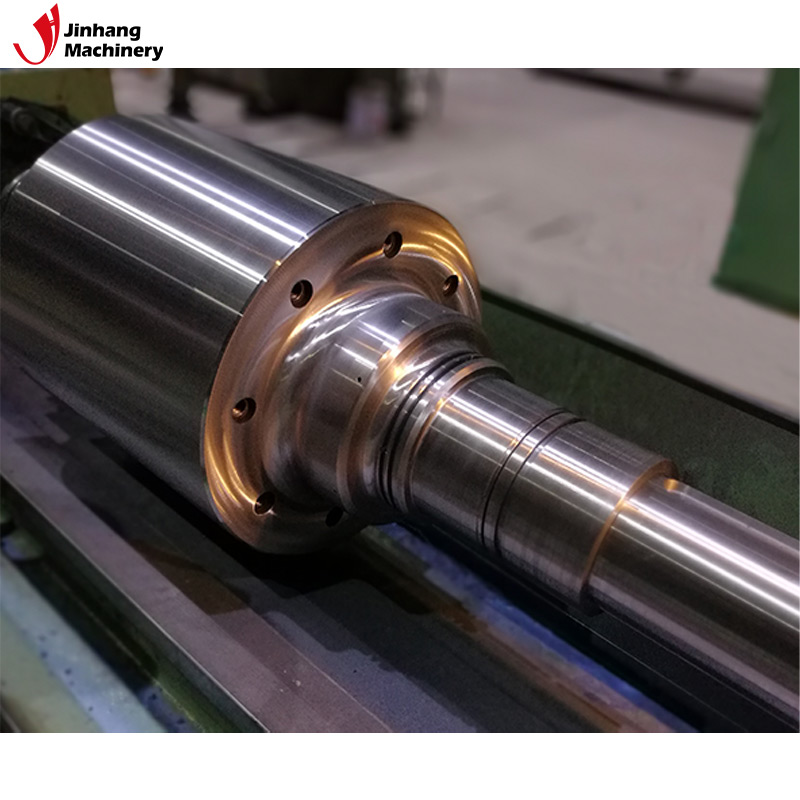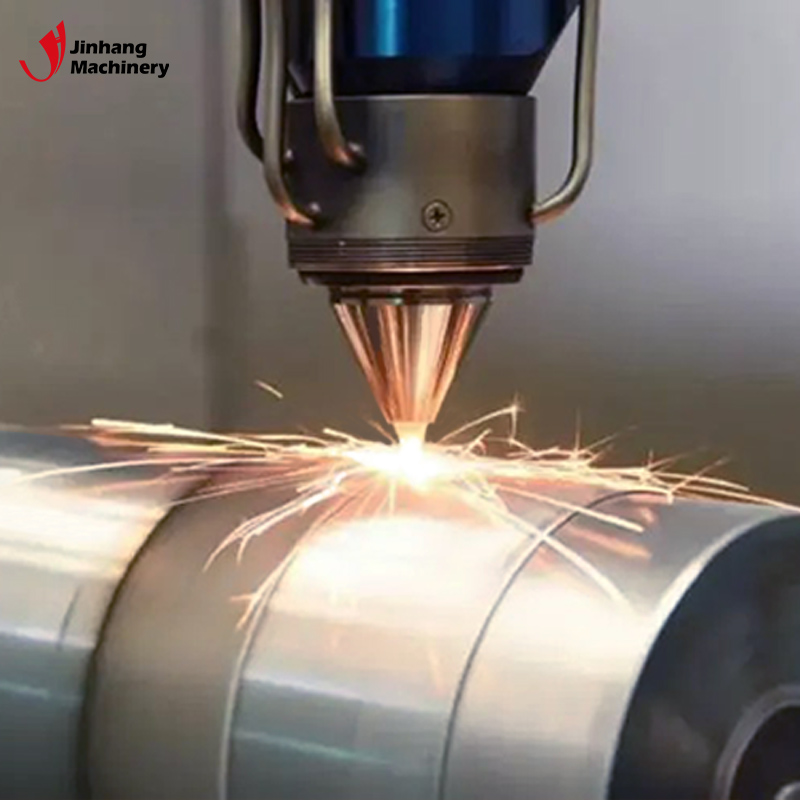Why does the chrome plating of industrial chrome plated roller fall off?
Industrial chrome plated roller is an indispensable key component in many manufacturing industries and is widely used in printing, textile, papermaking, metal processing and other industries. The main function of chrome plated roller is to provide a strong, wear-resistant and corrosion-resistant surface through the chrome plating layer to ensure that the roller maintains stable performance under extreme working conditions such as high pressure, high speed and high temperature. However, in actual use, the chrome plating of chrome plated roller sometimes falls off, which not only affects the working efficiency of the roller, but also may cause equipment damage and production line shutdown. So, what exactly causes the chrome plating to fall off? This article will explore this issue in depth.

Basic Principles and Process of Chrome Plated Roller
Before discussing the reasons for the chrome plating of chrome plated roller to fall off, it is necessary to understand the basic principles and manufacturing processes of chrome plated rollers. Chrome plated rollers are usually made of hard steel or other metals, and the surface is covered with a layer of chrome through an electroplating process. The main function of the chrome layer is to improve the wear resistance, corrosion resistance and hardness of the roller, thereby extending the service life of the roller.
What is the process of electroplating?
The manufacturing process of chrome plated roller involves a series of complex electroplating process steps:
● Surface treatment: Before electroplating, the surface of the roller needs to be treated, such as polishing, degreasing and pickling. This is to ensure that the roller surface is clean and free of contamination so that the chrome layer can be firmly attached to the substrate.
● Electroplating: Through the current in the electrolyte, chromium ions are deposited on the surface of the roller to form a chrome layer. This process needs to be carried out under strictly controlled current, voltage and temperature conditions.
● Post-treatment: After electroplating, passivation treatment is usually required to improve the corrosion resistance of the chrome layer, and polishing is used to improve the surface finish.

What are the characteristics of the chrome layer on chrome plated rollers?
The thickness of the chrome layer on chrome plated rollers is usually between a few microns and hundreds of microns, depending on the specific application. Although the chrome layer has excellent hardness (generally between 60 and 70 HRC) and good wear resistance, it is also a relatively brittle material, which means that it may break or peel off when subjected to external forces or other stresses.
Why does the chrome layer of chrome plated rollers fall off?
The shedding of the chrome layer is usually the result of a combination of factors. Here are some of the main reasons.
Improper surface pretreatment
During the electroplating process, the surface treatment of the roller is crucial. If the roller surface is not clean enough or there are pollutants such as oxide layer and oil before electroplating, it is difficult for the chrome layer to firmly bond with the substrate. In this case, the chrome layer of the chrome plated roller is prone to shedding during use.
● Incomplete pickling: Pickling is an important step to remove oxides on the roller surface. If the pickling is not thorough, the residual oxide will hinder the adhesion of the chrome layer, causing the chrome layer of the chrome plated roller to gradually peel off during subsequent use.
● Residual oil: If the roller surface is not thoroughly degreased before electroplating, the residual oil will weaken the bonding force of the chrome layer during the electroplating process, thereby increasing the risk of shedding.
Improper electroplating process parameters
The control of the electroplating process is crucial to the quality of the chrome layer. Changes in current density, temperature and electrolyte composition will affect the deposition quality of the chrome layer.
● Current density is too high or too low: If the current density is too high, the chrome layer of the chrome plated roller may be too fragile and easy to crack; if the current density is too low, the chrome layer will not adhere well and will fall off easily.
● Improper temperature control: If the temperature of the plating solution is too high or too low, it will affect the density and adhesion of the chrome layer. If the temperature is too high, the stress of the chrome layer may increase, while if the temperature is too low, the structure of the chrome layer may become loose, which will increase the risk of falling off.
● Inappropriate electrolyte composition: The concentration, acidity and impurity content of chromium ions in the electrolyte need to be strictly controlled. If the electrolyte composition is unbalanced, the internal structure of the chrome layer may be uneven, which may cause it to fall off in subsequent use.
Mechanical stress during use
Chrome plated rollers are often subjected to large mechanical stresses during use, such as extrusion, stretching, and impact. These stresses may cause tiny cracks on the surface of the chrome layer, which will gradually expand during repeated use, eventually causing the chrome layer to peel off.
● Excessive pressure: If the pressure on the chrome plated roller during operation exceeds its designed bearing capacity, the chrome layer may crack due to excessive compression or stretching, and gradually fall off under long-term action.
● Frequent impact: In some working environments, chrome plated rollers may be subjected to frequent mechanical impacts, such as sudden starting or stopping. In this case, the chrome layer is prone to peeling off due to stress concentration.
Chemical corrosion
Although the chrome plated roller has good corrosion resistance, it may still be corroded in some extreme chemical environments. If the surface of the chrome layer is corroded by acid, alkali or other corrosive substances, it may cause tiny holes or cracks on the surface, which will accelerate the shedding of the chrome layer.
● Acid-base environment: In a strong acid or alkali environment, the corrosion resistance of the chrome layer may be weakened, especially under long-term contact, corrosion spots may appear on the surface, and eventually cause the chrome layer to fall off.
● Corrosive gas: In some production environments, there may be corrosive gases, such as chlorine, hydrogen sulfide, etc. These gases will have an adverse effect on the chrome layer of the chrome plated roller, accelerating its aging and shedding.
Thermal stress
When the chrome plated roller works in a high temperature environment, thermal stress may be generated between the chrome layer and the substrate due to the different thermal expansion coefficients. Long-term accumulation of thermal stress may cause the chrome layer to crack or peel off.
● High temperature environment: In a high temperature environment, the expansion difference between the substrate and the chrome layer will cause internal stress. If the stress is too large, the chrome layer will crack and gradually fall off.
● Temperature fluctuation: Frequent temperature changes will also cause repeated thermal stress, which will accelerate the shedding process of the chrome layer of the chrome plated roller.
Substrate defects
The quality of the substrate itself is also an important factor affecting the adhesion of the chrome layer. If there are tiny cracks, pores or other defects in the substrate, these defects will be magnified during the electroplating process and become a hidden danger of the chrome layer of the chrome plated roller falling off.
● Surface microcracks: Microcracks on the surface of the substrate will become stress concentration points after electroplating, which can easily cause the chrome layer to crack and fall off during use.
● Substrate pores: If there are pores on the surface of the substrate, these pores may absorb electrolyte during the electroplating process, resulting in an uneven structure of the chrome layer and an increased risk of shedding.

How to prevent the chrome plated roller from falling off?
After understanding the reasons for the chrome plated roller falling off, taking corresponding preventive measures can effectively extend the service life of the chrome plated roller.
● Optimize the surface treatment process: Ensure that the surface of the substrate is thoroughly cleaned, and carry out sufficient pickling and degreasing treatment to improve the adhesion of the chrome plated layer.
● Strictly control the electroplating parameters: During the electroplating process, strictly control the current density, temperature and electrolyte composition to ensure that the chrome plated layer is uniform and dense.
● Avoid excessive mechanical stress: During use, the pressure and impact on the chrome plated roller should be reasonably controlled according to the equipment design specifications to avoid excessive mechanical stress.
● Strengthen anti-corrosion measures: In an environment where it may be exposed to acid, alkali or corrosive gases, appropriate protective measures should be taken, such as coating a protective layer or using a preservative.
● Monitor temperature changes: When working in a high temperature environment, the temperature changes of the equipment should be monitored to minimize temperature fluctuations and avoid the chrome plated roller from falling off due to thermal stress.

Premium Rolls for Industrial Use – Affordable and Customizable
Looking for premium rolls for your industrial equipment? JH Machinery offers high-quality, customizable rolls for various industries, including the metallurgy, packaging, and automotive sectors. We specialize in producing rubber rolls, chrome plated rollers, and chrome-plated rolls, all manufactured to meet exacting standards. Our factory in China uses advanced production methods to ensure top-notch performance. Get in touch for competitive pricing, special offers, and bulk purchase options.
